
Sportlight_7
.pdf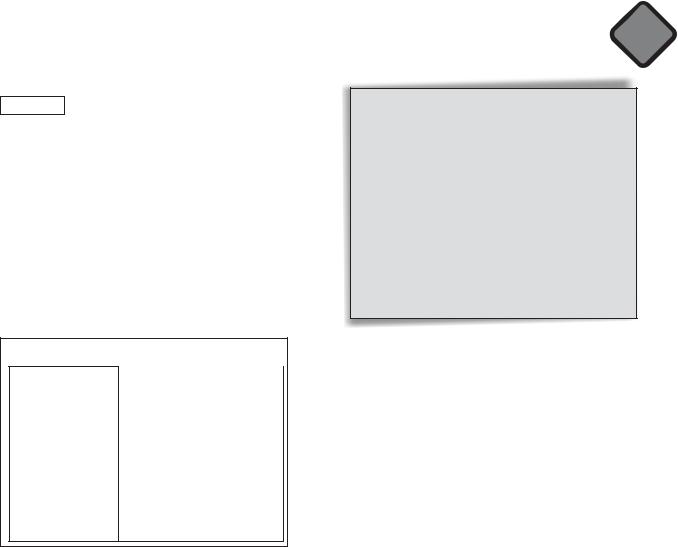
Writing
9Focus An advertisement
Ss work in groups. Go through the rubric with Ss and elicit key words (advertisement, gadget, name, price, what it can do). Refer Ss back to the advertisement in Ex. 8 and tell them they can use it as a model. Brainstorm ideas and write them on the board. Elicit what Ss should include in their advertisement (name, price, what it can do, etc). Allow Ss time to complete the task in class. Go around the classroom monitoring Ss’ work and helping with any difficulties. Check Ss’ work and give feedback. Alternatively, you can assign the task for HW provided you have gone through it orally in class.
Suggested Answer Key
New & Improved ñ Stainless steel blades (never need sharpening)
ñEasy-grip plastic handle
ñLife-long guarantee
Slice-o-matic! Slice-o-matic can dice, slice, cube, cut and mince. No kitchen should be without one! Only £8.99
Gadget madness 5b
Synergy
ñAllow Ss one minute to think of six words and the grammar structures they have learnt in today’s lesson. Ask Ss to use them to make their own sentences.
ñWhen Ss have finished ask them to get up and go around the class to find a partner who has something in common with them e.g. same hair/eye colour, same clothes, same taste in music, etc.
ñAsk Ss to discuss what they have learnt in the lesson with their partner.
71
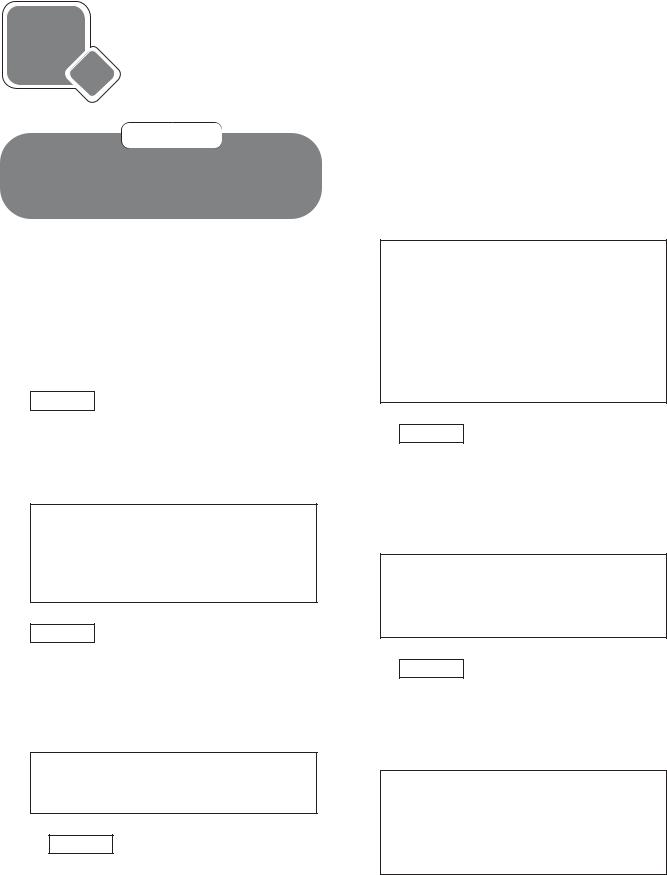
5 c What’s your opinion?
Objectives
Reading & Listening: an article about schools of the future
Writing: an opinion essay
Introduction
Draw Ss’ attention to the title, What’s your opinion?, and ask them what they think it means. Ask Ss what they think schools of the future will be like. Encourage Ss to express their opinions while recycling phrases from the previous unit.
Reading & Listening
1Focus Expressing opinion
Ask Ss to read the speech bubbles quietly and then have two Ss read them aloud. Encourage Ss to express their opinions on both statements. Stimulate class discussion.
Suggested Answer Key
S1: I don’t think computers will ever replace teachers because computers can’t give clear answers for all students’ questions.
S2: I agree. etc.
2Focus Stimulating interest/predicting
content
Ask Ss to read the title of the article and to say what they think the article is about. Elicit ideas from around the class. Ss read and/or listen to the text to check if their guesses were right.
Answer Key
The article is about what schools will be like in the future.
3 a) Focus Reading for specific information
Ask Ss to read the article and to make a list of viewpoints for and against computers. Allow Ss
time to complete the task. Go around the class room monitoring Ss’ work. Ss compare their list with a partner. Ask Ss to read their list aloud to the class. Ask Ss if they agree with the viewpoints and stimulate a discussion.
Answer Key For
writing assignments, keeping notes during lectures, looking up information online
Against
computers will never replace teachers, can’t act as role models, can’t help with difficult tasks
b) Focus Building vocabulary: linking words
Ss work in pairs. Ask Ss to find the words in italics and to say which ones are used to add points, to show contrast or to conclude. Allow Ss time to complete the task. Check answers with class.
Answer Key
add points: What’s more, Moreover show contrast: However conclude: To sum up
4 a) Focus Matching paragraphs to headings
Read the rubric and explain the task. Allow Ss time to complete the task. Do the task as a class and explain the importance of following the structure.
Answer Key
1 Introduction (presentation of topic)
2 Viewpoints & examples
3 Opposing viewpoints & examples
4 Conclusion (summary of topic)
72

b) Focus Building vocabulary
Ask Ss to explain the meaning of the words in bold without the use of a dictionary i.e. They can use synonyms, paraphrase etc. Elicit/ Explain the meanings and write them on the board. Ss should copy the words into the vocabulary section of their notebooks.
Answer Key
school assignments (n): school work such as projects students need to do
keep notes (exp): write down words or ideas you need to remember
go online (exp): connect to the Internet motivate (v): encourage/give sb a good reason to do something
role models (n): people who give examples of good behaviour
5 a) Focus Using topic/supporting sentences
Draw Ss’ attention to the Study Skills box. Elicit/ Explain what topic sentences are. Ask Ss to read the Study Skills box quietly. Then read it aloud for the class. Check understanding. Ask Ss to identify the topic sentences in the text and think of sentences that could be used to replace them. Allow Ss time to perform the task individually. Go around the classroom monitoring Ss’ work and helping where necessary. Check answers.
Answer Key
Topic sentences to be underlined: It is true that technology plays a big part in learning today. However, computers will never be able to replace teachers.
Suggested Answer Key
Replacement topic sentences: Computers are very important for education.
However, computers will never be able to do everything a teacher can do.
What’s your opinion? 5c
b) Focus Identifying supporting
Read out the rubric. Check understanding of the task. Allow Ss time to find the supporting sentences. Check Ss’ answers.
Answer Key
In many parts … lectures.; what’s more … course.
Teachers motivate … explanations.; Moreover … For them.
Writing
6 a) Focus Writing supporting sentences
Go through the rubric with Ss and elicit key words (school magazine, articles, opinion on Computers: A blessing or a curse?). Ask Ss to look at the topic sentences and find supporting ideas for them. Brainstorm ideas and write them on the board.
b)Focus An opinion essay
ñElicit the information that Ss should include in their article (presentation of topic, viewpoints and examples, opposing viewpoints and examples, conclusion). Ss use the topic/ supporting sentences from Ex. 6a.
For:
ñComputers help save paper.
ñComputers save space in your house.
ñComputers help us learn.
ñComputers allow us to stay in contact with people via e-mail.
Against:
ñComputers can be bad for your eyes.
ñSome children may spend too much time playing computer games.
ñComputers don’t help children to communicate with others.
ñAllow Ss time to complete the task in class. Go around the class monitoring Ss’ work and helping with any difficulties. Ss compare work. Check Ss’ work and give feedback. Alternatively, you can assign the task for HW provided you have gone through it orally in the class.
73

5c What’s your opinion?
Suggested Answer Key Computers: A blessing or a curse?
There aren’t many people who don’t know how to use computers these days. Look in almost any home, classroom or office and you’ll probably spot a computer.
It is true that computers can save a lot of space and time. Firstly, computers help save a lot of paper and that’s good for the environment. Secondly, computers save space in your house because they can do the job of encyclopaedias and other books. Lastly computers help us learn and allow us to stay in contact with people via e-mail.
On the other hand, the use of computers can lead to problems. To begin with, computers can be bad for your eyes, especially as some children may spend too much time playing computer games. Moreover, computers don’t help children communicate with others. Instead, children spend their time indoors sitting in front of a computer screen.
To sum up, computers have their good points and their bad points. Whether the advantages outweigh the disadvantages really doesn’t matter as computers are definitely here to stay.
Synergy
ñAllow Ss one minute to think about ten words they have learnt in today’s lesson. Ask Ss to use them to make their own sentences.
ñWhen Ss have finished ask them to get up and go around the class to find a partner who has something in common with them e.g. same hair/eye colour, same clothes, same taste in music, etc.
ñAsk Ss to discuss what they have learnt in the lesson with their partner.
5 d Culture Corner
Reading & Listening
1Focus Stimulating interest/Predicting
content
Draw Ss’ attention to the graph and the title of the text. Ask Ss to look at it for a moment and say what they think the text is about. Elicit answers from around the class and ask Ss to justify their answers. Play the recording. Ss listen and read the text to check their answers.
Answer Key
The text is about what kind of hi-tech equipment teenagers have got in their bedrooms.
2 a) Focus Reading for specific information
Ask Ss to read the text again and to study the graph in order to answer the questions. Tell Ss to read the questions first so that they know
74
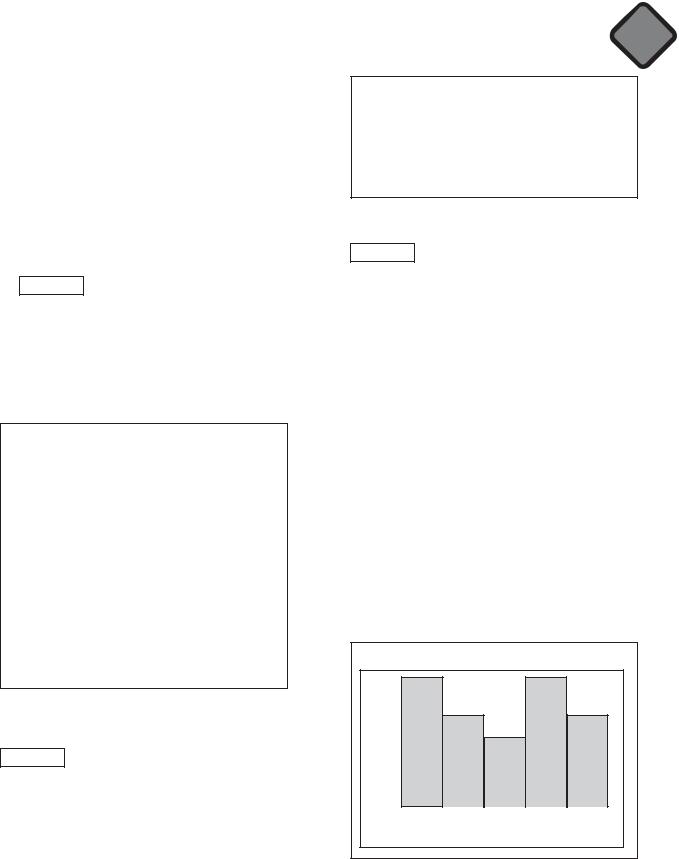
what information they are looking for in the text and the graph. Ss complete the task. Go around the classroom monitoring Ss’ work and helping where necessary. Ss compare their answers. Check answers with class.
Answer Key |
|
|
|
1 |
50% |
4 |
13% |
2 |
MP3 & PC |
5 |
pocket money or |
3 |
TV |
|
work |
|
|
|
|
b) Focus Building vocabulary
Ask Ss to explain the meaning of the words in bold without the use of a dictionary, i.e. they can use synonyms, paraphrase etc. Elicit/ Explain the meanings and write them on the board. Ss should copy the words into the vocabulary section of their notebooks.
Answer Key
hanging out (phr v): spending time average (adj): typical
equipment (n): things which are used for certain purposes
innovations (n): newly invented things consoles (n): panel with switches/buttons used to control a machine/device
survey (n): set of questions to find out about something
gadgets (n): small electronic devices
pocket money (n): money that your parents give you every week
gold mine (n): a place where we dig for gold
Speaking
3Focus Using a graph to present information
Ask Ss to look at the graph again and to tell the class about what British teenagers have in their bedrooms. Allow Ss time to prepare individually before asking them to make their presentation.
Culture Corner 5d
Suggested Answer Key
From the graph we see that 50% of have got a high-fi or a DVD player in bedroom. About a third of teenagers MP3 player or a PC and finally 13% of have got digital TV.
Writing
4Focus A survey
ñGo through the rubric with Ss and elicit key words (survey, high-tech equipment your classmates own, questionnaire, make bar graph, showing results, type of items, percentage of children). Ask Ss what kind of questions they need to ask and brainstorm for ideas. You may use the questionnaire below as a guide.
|
Question |
Yes |
No |
|
|
|
|
1 |
Have you got a high-fi? |
|
|
|
|
|
|
2 |
Have you got a DVD player? |
|
|
|
|
|
|
3 |
Have you got an MP3 player? |
|
|
|
|
|
|
4 |
Have you got a PC? |
|
|
|
|
|
|
5 |
Have you got a Digital TV? |
|
|
|
|
|
|
ñAllow Ss some time to complete the task in class. Go around the class monitoring Ss’ work and helping with any difficulties. Ss compare work. Check Ss’ work and give feedback.
Suggested Answer Key
70% |
60% |
50% |
40% |
30% |
20% |
10% |
High-fi DVD MP3 |
PC Digital |
player player |
TV |
75
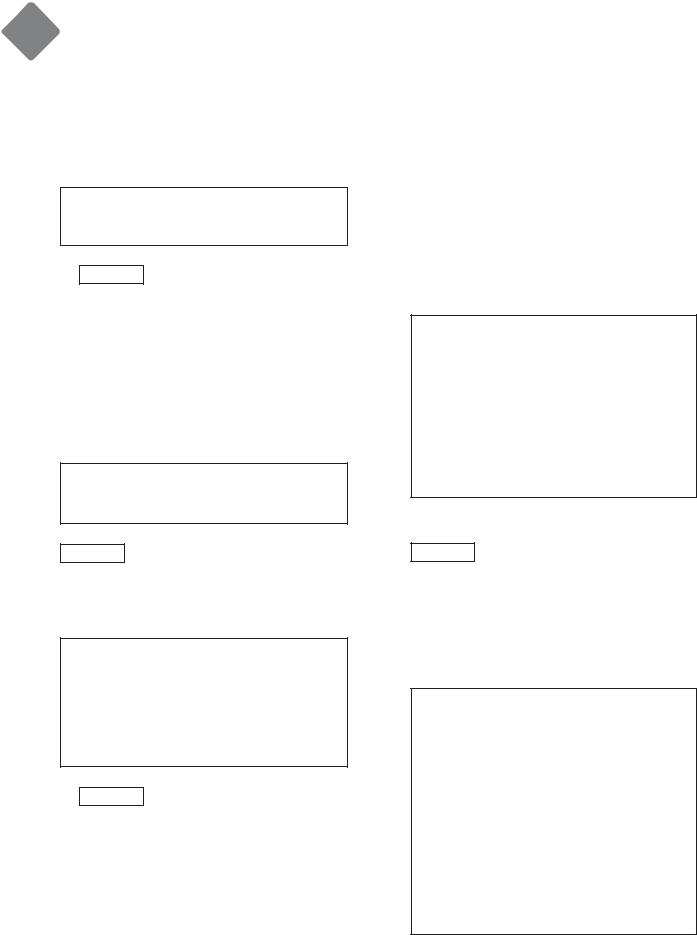
5 |
|
|
English in Use |
|
|
|
|
|
|
Reading & Listening |
||||
|
a) |
|
Stimulating interest |
|
1 |
Focus |
|||
|
|
Draw Ss’ attention to the pictures and ask them if |
||
|
|
they think they have anything in common. Elicit |
||
|
|
answers from around the class. |
||
Suggested Answer Key
They are all related to the computer or the Internet.
b) Focus Listening & repeating
ñ Ask Ss to read the phrases quietly to themselves. Elicit/Explain any unknown words. Tell Ss they are going to listen to the phrases and repeat them one by one. Play recording, pausing after each phrase for Ss to repeat. Correct Ss’ pronunciation and intonation.
ñ Ask Ss which sentences are used by a person asking for or giving instructions. Elicit answers from the class.
Answer Key
Asking for instructions: 1, 3, 6, 7
Giving instructions: 2, 4, 5, 8
2Focus Completing gap filling exercise
Read the rubric and explain the task. Play the recording (twice if necessary). Ss complete the task. Ss compare answers. Check answers.
Answer Key
1 Can you help me send an e-mail? 2 Now connect to the Internet.
3 Got it! What’s next?
4Make sure you click on ‘send’ when you finish writing it.
5 That was easier than I thought.
3 a) Focus Putting pictures in order
Ss work in pairs. Ask Ss to look at the pictures again. Ask Ss to read the dialogue again and put the pictures in the correct order. Allow Ss time to complete task. Go around the classroom monitoring Ss’ work and helping where necessary. Pairs compare answers with the pair beside them. Check answers.
Answer Key |
|
|
|
|
|
A 5 |
C |
6 |
E |
2 |
|
B |
4 |
D |
3 |
F |
1 |
|
|
|
|||
|
|
Asking for/Giving instructions |
|||
b) |
Focus |
||||
Ss work in pairs. Ss use the pictures in the correct order to act out a dialogue similar to the one in Ex. 2. Allow Ss time to prepare. Go around the classroom monitoring Ss’ work and helping where necessary. Ask individual pairs to present their dialogues to the class. Accept feedback and correct where necessary.
Suggested Answer Key
A:Can you help me send an e-mail?
B:Sure. First turn on the computer.
A:Ok. What next?
B:Now connect to the Internet and access your email.
A:Got it! What’s next?
B:Now create a new message.
A:Wow, that was easier than I thought.
B:Yes, but don’t forget to click on ‘send’.
Speaking
4Focus Role playing a dialogue
Ss work in pairs. Read the rubric and explain the task. Go through the instructions with Ss and check understanding and elicit/explain any unknown words. Allow Ss time to prepare and have a few pairs act out their dialogue for the class. If possible have Ss record their dialogues. Correct where necessary.
Answer Key
A:Can you help me send an SMS?
B:Sure. Switch on your phone.
A:Okay!
B:Now, go to the menu on your phone.
A:Got it! What’s next?
B:Choose ‘Messages’ and then select ‘Create Message’.
A:All right.
B:Now, write your SMS and select ‘send’.
A:Anything else?
B:Yes, key in the number and press ‘send’ again.
A: Thanks.
76

Pronunciation
5Focus Pronouncing /≤/ - /∑/
Focus Ss’ attention on the phonemes chart in the appendix. Ask them to find the two symbols. Pronounce the sounds clearly and slowly. Demonstrate where your tongue, teeth and jaw are positioned for the sound. Ss listen and repeat. Drill sounds around the class. Read the rubric and explain the task. Play recording. Ss listen and tick correct boxes. Ss compare answers. Check Ss’ answers and correct any mistakes.
|
|
|
English in Use |
|
5 |
||||||
|
|
|
|
|
|
|
|
|
|
|
|
|
|
|
|
|
|
|
|
|
|
|
|
Answer Key |
|
|
|
|
|
|
|
|
|
||
|
|
|
|
|
|
|
|
|
|
|
|
|
|
/≤/ |
|
/∑/ |
|
/≤/ |
|
/∑/ |
|
|
|
|
calm |
|
|
|
task |
|
|
|
|
|
|
|
come |
|
|
|
tusk |
|
|
|
|
|
|
|
harp |
|
|
|
calf |
|
|
|
|
|
|
|
cup |
|
|
|
cuff |
|
|
|
|
|
|
|
|
|
|
|
|
|
|
|
|
|
|
|
|
|
|
|
|
|
|
|
|
|
|
Reading & Listening
1Focus Stimulating interest/Predicting
content
ñDraw Ss’ attention to the title and the pictures. Ask Ss what they think the text is about. Elicit ideas from around the class.
ñSs read the text to see if they guessed correctly. Check answers.
Answer Key
The text is about the use of computers to simulate reality.
2 a) Focus Completing gap filling exercise
ñAsk Ss to read the text and fill in the gaps with the A, B, C options. Allow Ss time to complete task. Ss compare answers.
ñPlay recording. Ss check answers.
|
Answer Key |
|
|
|
||
|
1 |
a |
3 |
There |
5 also |
|
|
2 |
don’t |
4 |
by |
|
|
|
|
|
|
|
||
|
|
|
|
Reading for specific information |
||
b) |
|
Focus |
||||
Ask Ss to read the questions first so they know what information to look for. Allow Ss time to complete the task. Check answers.
Extensive Reading |
5 |
|
|
Answer Key
1Computer simulation is the use of computers to simulate reality.
2Simulations are useful because we can use them to test new products and train people.
3Engineers and pilots can use simulations.
c)Focus Building vocabulary
Ask Ss to explain the meaning of the words in bold without the use of a dictionary, i.e. they can use synonyms, paraphrase etc. Elicit/Explain the meanings and write them on the board. Ss should copy the words into the vocabulary section of their notebooks.
Answer Key
real life (exp): things that really happen in life training (n): period of time spent learning how to do sth
skills (n): abilities to do sth
Engineers: people who use scientific knowledge to build sth
faults (n): defects, things that are wrong with something
77

5 |
|
|
Extensive Reading |
|
|
|
|
|
|
|
|
|
|
|
|
|
|
|
|
|
|
||||
Speaking |
ñ Ask Ss to form adjectives from the nouns. Allow |
|||||||||||
|
|
|
|
|
|
|
|
Ss time to complete |
the |
task. Go around the |
||
3 |
|
Focus |
Discussing things that impress us |
|
|
|
||||||
|
|
|
|
classroom monitoring Ss’ work and helping where |
||||||||
|
Ss work in pairs. Ask Ss to look back at the article |
|
|
|
||||||||
|
|
|
|
necessary. Ss compare answers. Check answers. |
||||||||
|
and to think of what impressed them most. Allow Ss |
|
|
|
|
|
|
|
|
|||
|
time to discuss their ideas and then ask pairs to tell |
|
|
|
|
|
|
|||||
|
|
|
Answer Key |
|
|
|
||||||
|
the class what they talked about. |
|
|
1 |
dangerous |
4 |
traditional |
|
||||
|
|
|
|
|
|
|
||||||
|
(Ss’ own answers) |
|
2 |
dirty |
5 |
famous |
|
|||||
|
|
|
|
|
|
3 |
educational |
6 |
useful |
|
||
|
|
|
Forming adjectives from nouns |
|
|
|
|
|
|
|
|
|
4 |
|
Focus |
|
|
|
|
|
|
|
|
||
|
|
|
|
|
|
|
|
|||||
|
ñ Work with books closed. Write the following on |
5 |
|
|
|
Project: Designing a city of the future |
||||||
|
|
Focus |
||||||||||
|
|
|
the board: rain – rainy, care – careful |
Ss work in groups. Read the rubric and explain the |
||||||||
|
ñ Explain to Ss that we can use –ous, -y, -al, -ful |
|||||||||||
|
task. Allow Ss time to perform the task. Go around |
|||||||||||
|
|
|
to form adjectives from some nouns. |
|||||||||
|
|
|
the classroom monitoring Ss’ work and helping where |
|||||||||
|
ñ Elicit other examples from class. Ask Ss to open |
|||||||||||
|
necessary. When Ss have finished ask them to present |
|||||||||||
|
|
|
their books and read the language box silently. |
|||||||||
|
|
|
their city to the class. |
|
|
|
||||||
|
|
|
Check Ss’ understanding and help with |
|
|
|
||||||
|
|
|
|
|
|
|
|
|
|
|
||
|
|
|
difficulties if necessary. |
(Ss’ own answers) |
|
|
|
|||||
5 |
Progress Check |
|
|
Progress Check 5 and Look at Module 6 should be done in one lesson.
Answer Key |
|
|
|
|
|
|
|
|
|
|
|
||
1 |
1 |
cities |
3 |
flying |
5 |
glass |
5 |
1 |
am taking |
|
4 |
will be |
|
|
2 |
clean |
4 |
online |
|
|
|
2 |
is going to lose |
5 am going to buy |
|||
|
|
|
|
|
|
|
|
3 |
will get |
|
|
|
|
2 |
1 |
take |
4 |
watch |
7 |
store |
|
|
|
|
|
|
|
|
2 |
send |
5 |
send |
8 |
listen |
6 |
1 |
see |
|
3 |
get |
5 isn’t |
|
3 |
surf |
6 |
read |
|
|
|
2 |
dream |
|
4 |
don’t call |
|
3 |
1 |
button |
3 |
connect |
5 |
electronic |
7 |
1 |
b |
2 |
b |
3 a |
4 a |
|
2 |
Send |
4 |
store |
|
|
|
|
|
|
|
|
|
4 |
1 |
after |
2 forward |
3 up |
4 for |
|
|
|
|
|
|
|
|
78

Having fun |
|
6 |
|
Module |
|
||
|
|
|
|
Before you start …
Ask Ss to take a quick look at Module 5. Ask them what they think the future holds for us. Elicit vocabulary seen in the previous module. Ask Ss if they use computers and what they use them for. Stimulate discussion about what other gadgets they use.
Look at Module 6
ñAsk Ss to look at the title of the module, Having fun, and elicit/explain the meaning (enjoying yourself).
ñRefer Ss to the titles of the units on pp. 56-60 and to the various pictures and ask them how they are related to having fun (p. 56 places where we have fun; pp. 58-59 summer camps for children between the ages of 13 and 19; p. 60 an expression which means to have a great time).
ñUse pictures 1-3 to stimulate discussion and to prompt interest in the module as a warm-up activity. Ask questions to begin a discussion about topics that will be covered in the module, adjusting your questions according to Ss’ responses. This helps Ss feel they have control over their learning.
Suggested Answer Key
Focus Ss’ attention on pic. 1 (p. 63)
T: What page is picture 1 from? S1: It’s from page 63.
T: What can you see in the picture?
S2: It’s a sketch of someone in a swimming pool.
T: What else can you see on p. 63?
S3: Other sketches of rules for swimming safely in a swimming pool.
T: Where would you find them?
S4: In a leaflet about swimming pool rules.
Pic 2 (p. 56)
What can you see in the picture? What other pictures can you see on p. 56? How are the pictures related? How are they related to the title of the unit and the texts?
Pic 3 (p. 60)
What is the boy doing? How is the picture related to the title of the unit and the text?
Find the page number(s) for
If necessary, elicit/explain each item. Allow Ss time to find the page numbers for each item and check Ss’ answers. As appropriate, elicit/explain how each item is used and where Ss would usually expect to find them.
Answer Key
a website (p. 56)
What do you think the website is for? What else can you see on the page? Who do you think would visit this website? Why?
a postcard (p. 60)
How do you think the title is related to the picture and the postcard? What else can you see on p. 60?
a holiday camp advert (p. 58)
What sort of things do we do at holiday camps? Would you like to spend your summer at a holiday camp? Why? What type of camp is shown in the advert?
Listen, read and talk about …/Learn how to …/ Practise …/Write/Make
As described in the relevant section in Module 1.
79
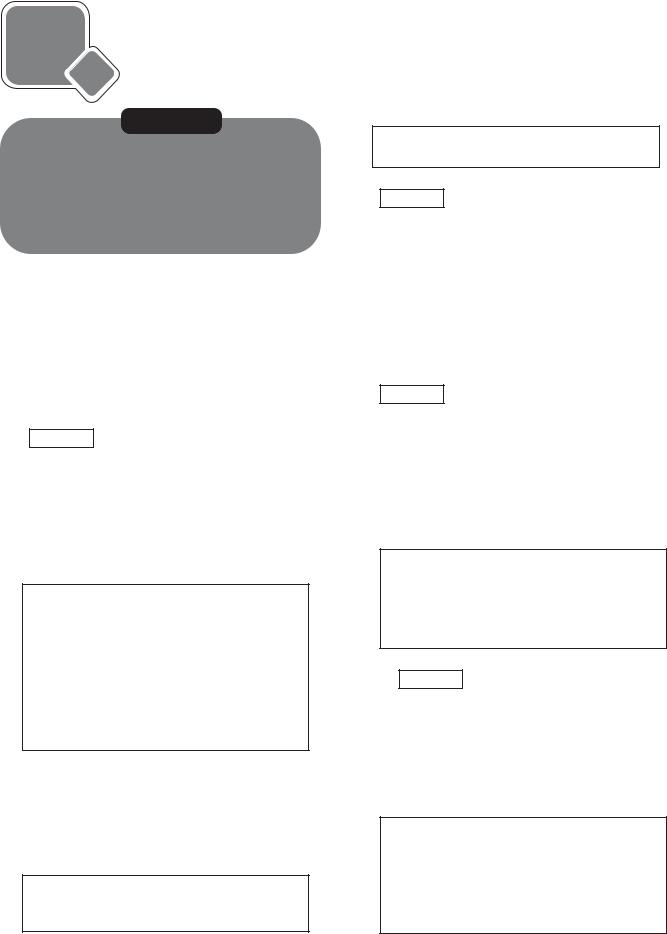
6 a The fun starts here!
Objectives
Vocabulary: related to fun activities
Reading & Listening: ads for theme parks
Grammar: present perfect
Speaking: talking about what you did at a theme park
Writing: an advert for a theme park
Introduction
Ask Ss to look at the title, Fun starts here, and the pictures. Elicit/Explain the meaning of the title (a place where you can have fun). Ask them what they think the unit will be about. Encourage Ss to predict what type of vocabulary they will see in the unit.
A:Yes, I have. In Disneyland.
B:What was it like? etc.
2Focus Visualising a scene
Tell Ss they are going to listen to some music. Ask them to close their eyes and to imagine being somewhere with some people as they listen. Ask them to imagine what they can see, hear, taste and smell. Play the recording and invite Ss to tell the class what they imagined.
(Ss’ own answers)
Reading & Listening
3 Focus Stimulating interest/predicting
Vocabulary
1Focus Building vocabulary related to fun
activities
ñDraw Ss’ attention to pictures A-C and ask them what kind of activities we can do there. Tell them to look through the list of activities. Elicit/Explain the meaning of any new vocabulary. Allow Ss time to match the activities with pictures A-C. Ss compare answers. Check Ss’ answers.
Suggested Answer Key
A fly in a pirate ship, shake hands with cartoon characters, see famous landmarks, go on a water ride, ride on a rollercoaster, meet a ghost, explore a haunted mansion, go on a rocket journey, go souvenir shopping
B ride on the big wheel, eat candy floss
C see trapeze artists, see clowns perform tricks
ñSs work in pairs. Ask Ss if they have ever tried any of these activities. Have two Ss read out the example exchange. Allow Ss time to discuss activities with their partners.
ñAsk several pairs to present their exchanges to the class.
Suggested Answer Key
A:Have you ever ridden on a big wheel.
B:No, I haven’t. How about you?
content
ñAsk Ss to look at the texts and to say what kind of texts they are and where they could find them, and what they are about. Allow Ss time to perform the task. Ss compare ideas.
ñSs listen to/read the text to check if they guessed correctly. Elicit answers from the class.
Answer Key
The texts are advertisements for theme parks. The first is a magazine article and the second is a website. They are about the things we can do there.
4 a) Focus Reading for specific information
ñAsk Ss to read the texts again and to answer the questions. Tell Ss to read the questions first so they know what they are looking for.
ñAllow Ss time to complete the task. Ss compare answers.
ñCheck answers.
Answer Key
1 in Tobu World Square
2 both
3 Disneyland
4 in Tobu World Square
5 Disneyland
80
